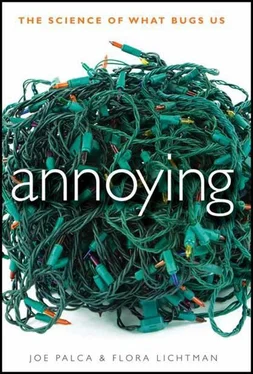Even if researchers are willing to put up with the odor, their colleagues and neighbors may not be. German scientist and skunk spray pioneer Dr. O. Löw was on an expedition through Texas in the 1870s. He wrote in a letter, “I had frequent opportunity to collect a sufficient quantity of this secretion to establish its chemical constitution, but all my companions protested against it, declaring the odour which clung to me to be unbearable. On my return to New York City I started a few chemical tests, with the little I had collected, when the whole college rose in revolt, shouting, ‘A skunk, a skunk is here!’ I had to abandon the investigation.”
Even in this golden age of fume hoods, studying skunk spray is difficult to do without annoying your colleagues. Wood, of Humboldt State University, was trying to figure out the chemical constituents of skunk spray. That meant collecting samples. “I found dead skunks on the road, and then I put a needle into the duct that had the chemical and pulled it out with a syringe,” he says dryly. “Once you’ve taken a little bit out, the dead skunk would then smell. I would put it in a plastic bag and throw it out the window and then go outside and get it so I wouldn’t smell up the building.”
The fume hood—which is sort of like an oven fan that sucks air out of an enclosed lab bench—worked great at keeping his room odor-free. The problem is that the contaminated air had to go somewhere. It’s usually evacuated from out of the top of the building. This is how Wood discovered who on campus was downwind from him. “The president called me up and said, ‘Are you working with skunks today?’ So I stopped working on skunks at the university.”
Wood started to study skunks because he was interested in chemical ecology: the study of how chemicals carry messages in nature. He says that the field got off the ground about thirty-five years ago, with the study of pheromones—chemical signals that organisms use for communication. Wood has done field research in Africa on the way ticks and tsetse flies use chemicals to communicate; he’s also studied ants in Costa Rica. When he was a postdoc at Cornell University, however, he became attracted to the stench of skunks. “Skunks have the obvious chemical defense that everybody knows about, so I worked on those,” Wood says.
The spray of the striped skunk ( Mephitis mephitis ) has about seven volatile odor compounds, Wood found. The exact chemical makeup of skunk spray varies from species to species. In all cases, though, the stink is caused by sulfur-laden molecules called thiols. These chemicals, which used to be called mercaptans because of their reactivity with mercury, share similarities in chemical structure to hydrogen sulfide—a toxic compound responsible for the stench of rotten eggs, salt marshes, and bad breath.
Hydrogen sulfide has one sulfur atom and two hydrogen atoms (H 2S). If you remove a hydrogen atom and replace it with a carbon one, then you have a thiol. The length of the carbon chain determines the identity of the thiol: “If you get a thiol on a carbon chain that’s about eight carbons long, it no longer has any odor. It has to be a very short-chain thiol [to smell],” Wood says. Methanethiol is the simplest thiol, with only one carbon (e.g., CH 3SH). “Methanethiol and related compounds are produced by the decay of living material,” says chemist Eric Block, of the State University of New York at Albany and author of Garlic and Other Alliums: The Lore and The Science . {19} 19 2. Eric Block, Garlic and Other Alliums: The Lore and the Science (Cambridge, UK: Royal Society of Chemistry), 2009.
“Methanethiol has a horrible, stinky, skunky odor to it.”
Just what makes an odor skunky or sweet is mysterious, though. Here’s some of what we know about the act of smelling. A molecule floating through the air gets sucked through our nostrils and travels north about seven centimeters until it reaches a ridged tissue called the olfactory epithelium. In that membrane, twenty million olfactory receptors serve as the landing pad for odors. Roughly speaking, an odor molecule locks into a receptor, triggering the nerve to send a signal to the brain.
The most widespread theory for how we detect various odors (and humans are thought to be able to smell about ten thousand different smells) is that receptors have different shapes, and various odor molecules therefore lock into different receptors. Rachel Herz, a psychologist specializing in smell at Brown University, wrote, “Different scents activate different arrays of olfactory receptors in the olfactory epithelia, producing specific firing patterns of neurons in the olfactory bulb. The specific pattern of electrical activity in the olfactory bulb then determines the scent we perceive. The scent of a mango elicits a different pattern of neural impulses than the smell of a skunk.” That’s a description from her book The Scent of Desire . {20} 20 3. Rachel Herz, The Scent of Desire: Discovering Our Enigmatic Sense of Smell (New York: HarperCollins), 2007.
Then our brains translate these patterns into “skunk spray, yuck” or “mango, yum.”
That’s a broad-stroke picture of scent perception, but what drives our preferences for certain odors is perhaps more contentious. When it comes to our widespread dislike of skunk spray, Wood and Block theorize that our aversion to these molecules may be protective, something skunks have taken advantage of.
“Thiols and certain nitrogen compounds are intimately associated with the decay of living materials, of protein material,” says Block. “When food decays, it’s usually because there are bacteria present, and those bacteria can use toxins. Generally, higher animals can detect when food is bad and avoid it. And they detect it with their noses.” Maybe this sensitivity to rancid food was favored by evolution. “Animals with the best sense of smell toward molecules associated with decay survive better than those that have an impaired sense of smell,” says Block. It’s not only the ability to pick up the scent—if Block’s theory is correct, the organisms that found the smell unpleasant would survive better.
Wood has a similar theory, although his is based on the relationship of thiols to hydrogen sulfide—a compound we are also sensitive to in low doses. Hydrogen sulfide is often found in places that have no oxygen. “Animals that breathe oxygen want to stay away from areas that don’t have oxygen,” Wood says. “So our receptors for finding hydrogen sulfide are very highly tuned.” Skunks might have evolved to take advantage of this sensitivity by producing a spray with a chemical that has a similar base structure, says Wood. Both theories suggest that skunks capitalize on our evolved sensitivity to odors that signify something harmful. This is the genius of skunk spray: it’s not particularly harmful; it reminds us of something that is. This is very annoying.
There’s usually a reason that things are annoying, even if the reason isn’t immediately obvious. Consider the events that occurred in the lab of Nikolaas Tinbergen, a Dutch scientist who studied sticklebacks, a small common fish. In 1973, he and Konrad Lorenz and Karl Von Frisch won the Nobel Prize for their work on animal behavior. The story goes like this: Tinbergen kept sticklebacks in tanks in his lab. Every day, around eleven in the morning, the sticklebacks acted very agitated. Under normal circumstances, the fish would glide placidly through the vegetation in the tanks, but at eleven they darted around the tank as if something was bothering them. After pondering this strange behavior for a time, Tinbergen realized that the timing of the fish agitation coincided with the daily arrival of the mail truck. The fish that exhibited the strange behavior were in a tank by the window in sight of the truck’s arrival, and the truck was bright red.
Читать дальше












